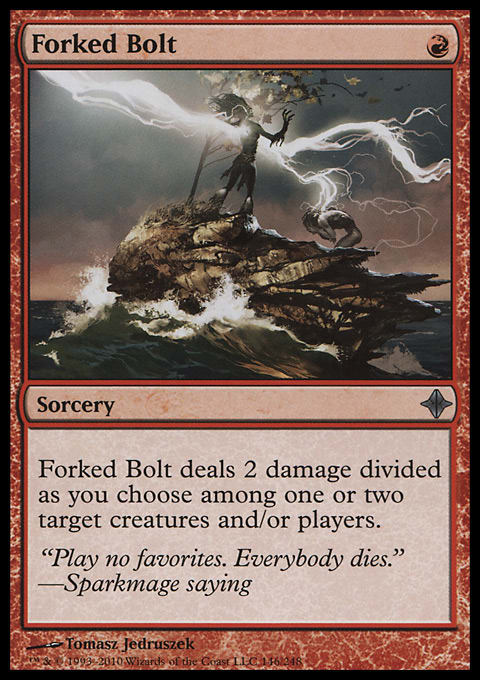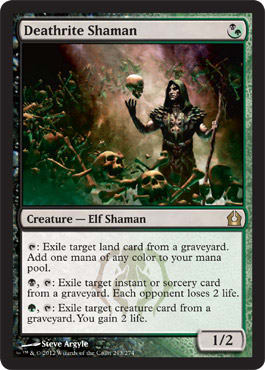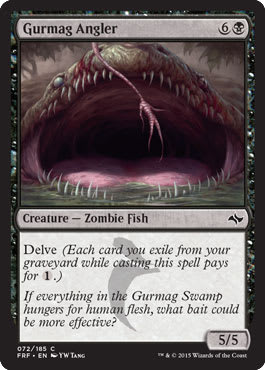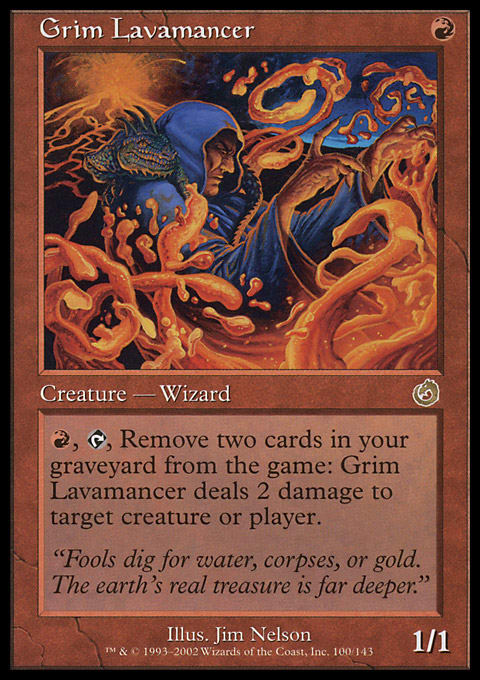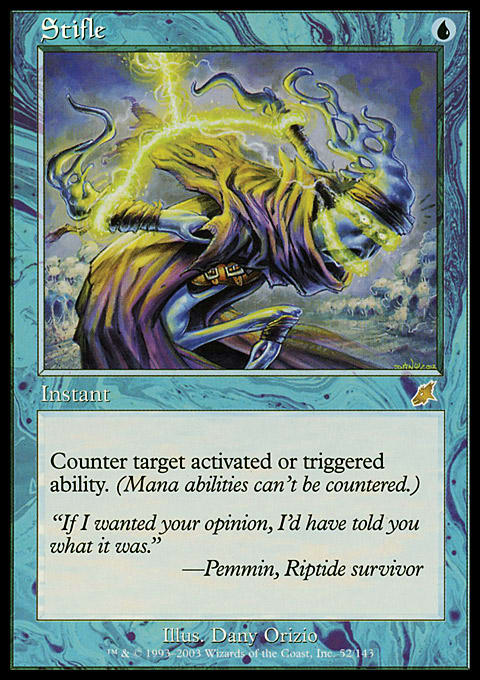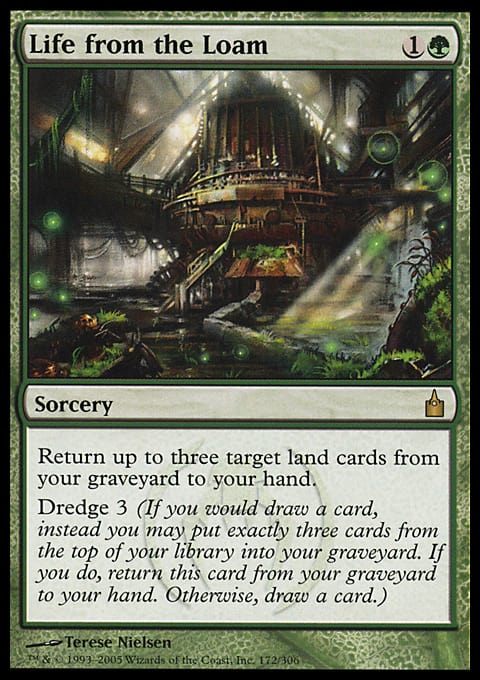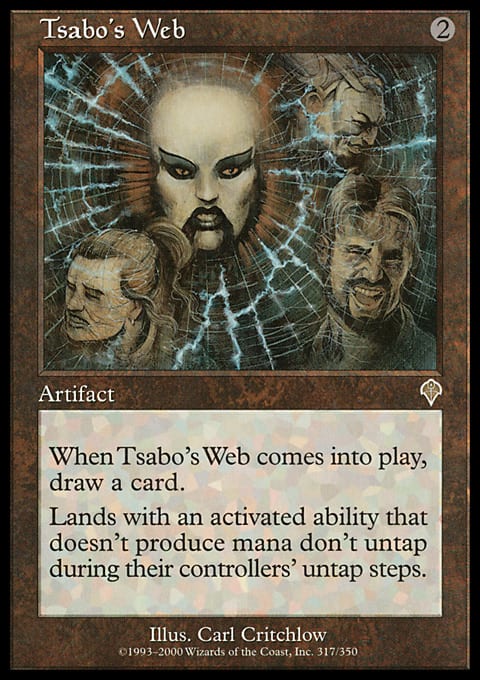Howdy!
Today I want to focus on Legacy as I haven't spent much time discussing the format. I've written about 10,000 words on Modern in the last few months so this will be a nice change of pace.
Grixis Delver has been my number one deck lately and it just so happens I took down a 1K with it last month at BC Comix. I'll talk about my updated list, as I got plenty of ideas from that event. I wouldn't say it's a mistake to play any other deck in the format, but this is likely the strongest choice. Even if this deck isn't your cup of tea or the Blue duals are too expensive, make sure to be aware of Grixis Delver as it's the most popular archetype in the format.
I will take two articles to go over the major matchups in detail and highlight all of the strange nuances that are native to Legacy.
This article will focus on two matchups: the mirror and Lands.
Let's get to it!
Here's my most recent list and what I will use for the sideboard walkthrough.
Grixis Delver -- Legacy | Kyle Boggemes
- Creatures (15)
- 2 Gurmag Angler
- 2 True-Name Nemesis
- 3 Young Pyromancer
- 4 Deathrite Shaman
- 4 Delver of Secrets
- Instants (16)
- 4 Brainstorm
- 4 Daze
- 4 Force of WIll
- 4 Lightning Bolt
- Sorceries (11)
- 1 Forked Bolt
- 2 Cabal Therapy
- 4 Gitaxian Probe
- 4 Ponder
- Lands (17)
- 2 Misty Rainforest
- 2 Scalding Tarn
- 3 Polluted Delta
- 3 Underground Sea
- 3 Volcanic Island
- 4 Wasteland
- Sideboard (15)
- 1 Forked Bolt
- 1 Engineered Explosives
- 2 Flusterstorm
- 2 Surgical Extraction
- 2 Pyroblast
- 2 Stifle
- 2 Diabolic Edict
- 2 Ancient Grudge
- 1 Grim Lavamancer
The maindeck is remarkably stock. I've tried a number of innovations only to fall back toward the original. I'll count it as a win that I made two changes that haven't been bad: swapping the eighth fetch land for the third Underground Sea and replacing Spell Pierces for Cabal Therapies. Other than those small changes this is Bob Huang's maindeck.
I tried Kolaghan's Command over Forked Bolt to fight Chalice of the Void. The interaction of destroying an artifact was so rare that idea got nixed. Then I tried three Cabal Therapies in the maindeck, but that was too many. It's more of a combo piece with Young Pyromancer and Gitaxian Probe. It requires some setup so I don't want to flood on the effect.
I tried a fourth Young Pyromancer over the second True-Name Nemesis to make the Cabal Therapies better, but Peezy isn't that strong against opposing creatures. He shines against Blood Moon as it only requires Mountains to cast. Young Pyromancer is also better than True-Name when you are trying to kill as fast as possible as it will add more power to the battlefield over a few turns.
Fetchlands can be changed to whatever you want as long as they all search for Islands. Pithing Needle makes me want to diversify the names of my fetchlands. Flooded Strand is the worst one because the other three into Underground Sea to cast Deathrite Shaman can trick the opponent into thinking you're on Four-Color Control.
The sideboard is another story. I perform the best in tournaments where I stick to an established maindeck, but make the sideboard my own. This is because the metagame is always shifting and board plans change from player to player.
I will go over some of the more popular matchups to help explain my sideboard choices.
Mirror Match
The Delver mirror is perhaps the most fun I have playing Magic at the moment. Since the list is stock, you get an edge through sideboarding and tight play. Some games are runaways with Deathrite Shaman or mana denial while others can be a long grind. Any resource becomes the most important piece in some games making it an extremely dynamic matchup.
An ideal opening hand involves starting the game with a creature. Deathrite Shaman is the strongest, but Delver can win quickly, too. Ponder is too low impact so you need to have a Lightning Bolt to kill their 1-drop on the following turn. I want board presence on turn one and Daze their 1-drop.
Make sure you don't expose yourself to a quick loss to Wasteland. Deathrite is the strongest 1-drop because it beats Wasteland on the first turn and can counter opposing Deathrite activations. I once had a game where there were three Deathrites in play and they all did something. Diminishing returns be damned.
Force of Will is typically weak in midrange mirrors, but it's even worse in the Delver mirror. The best line to take with Force is tapping out for a scary threat and counter the opponent's follow-up. Tapping low means your opponent has a chance to find a Daze before casting a big threat. As many types of mirror games devolve into using all of your resources I don't want to hold back a Delver to pitch to Force of Will like I do in other matchups.
Since both players have just 18 lands and four of them are Wasteland everyone is mana screwed most of the time. This means Daze is very powerful as it will find a strong card to counter even in the late game. Daze is another spell I like to pitch in the late game, making Force of Will more powerful, but that's not the case in the mirror.
Brainstorm should be used to find lands to avoid getting screwed by Wasteland or to ensure you keep the pressure on. This means aggressively flipping Delver or just finding more creatures to play. I like to shuffle away Force of Wills when I can. Since your hand can be filled with trashy soft permission it's good to use counterspells and hand disruption on opposing Brainstorms. I typically won't go so far as to force it, but Dazing when it means setting yourself back a land drop is acceptable.
A turn one blind Cabal Therapy is pretty loose, but I would name Deathrite Shaman if I had to. Remember you can flash back therapy in the mid game with a Delver when your larger creatures are coming close to finishing the game. You can get some hints on what to name due to Delver revealing spells.
Young Pyromancer seems great at first glance, but is irrelevant in a lot of board states. Deathrite Shaman is a ½ so you don't have many great attacks when it's in play. The tokens can block Gurmag Angler while you attack with Insectile Aberration or shoot them with Deathrite Shaman. It ends up being mediocre because two mana for a creature is a lot. I don't want to walk it into Daze and you will lose if that's your first threat since it will just eat a Lightning Bolt. That typically means Young Pyromancer is one of the last spells in hand and the ability is best when you play spells once he is on the battlefield.
The removal is very important which is why I have the fifth burn spell in Forked Bolt. turn one Deathrite is the best play so I want to have an answer. Deathrite is a way to ramp through a Daze for your next threat.
Gurmag Angler is the scariest threat because it can be cast around Daze. Graveyards will be full as Deathrite Shamans are quickly answered. Lightning Bolt, Forked Bolt, Fatal Push, and Kolaghan's Command are no match for a 5/5. I see players board in Abrade and Grim Lavamancer to fill Deathrite Shaman, but all of these spells fall short against Gurmag Angler.
Winning the die roll is very important as each mana represents a tempo play. Your Deathrite on turn one is free from being Dazed while you can counter their 1-drop.
Some games come down to a race because Delver is hard to block and True-Name is above interaction because it's a fair and balanced card. This means I want to correctly time Gitaxian Probes. I will play them more aggressively if I don't have an early threat to cast or Cabal Therapy is in hand. Probe is the strongest cantrip as you get perfect information on what land to hit with Wasteland or if it's worth sacrificing at all. Some cases you want to hold it to see if you need to play around Daze on a crucial turn to resolve a big threat like True-Name Nemesis.
My ideal mana is an Underground Sea, a Volcanic Island, and a fetch land. This provides Wasteland Insurance as I can replace my secondary color either way. Remember you can run out a spell with Daze backup with Wasteland's ability on the stack to return your land. Grixis Delver only needs 3 mana to function so the opponent may have more lands in hand to Brainstorm away. Firing off a Wasteland means the opponent may have to make an unwanted land drop as it is basically eating a card from hand. If they don't have the replacement land it's even worse for them.
If you don't need to find action then it can be right to hold Probe in case you draw Young Pyromancer. Each turn Probe sits in your hand means you see an extra draw step.
Make sure you write down the cards you see with Probe and pay attention when they Brainstorm. There's no correct play for what cards to put back as it depends what level your opponent is on. Did they shuffle back the Daze you knew about? What do you now name with Cabal Therapy now? A common line I've seen is to leave known Dazes in hand and then leave fetches unbroken with other situational interaction on top of the deck.
Force of Will is typically so bad I don't want to play games around revealed hidden information. Five mana is very difficult to have access to without there being some sort of lopsidedness in resources. Since most spells cost less than one mana or are free they bounce off each other. Hardcasting Force is going to be impactful when the game goes long and both players have enough mana. Most Delver lists have Deathrite Shamans, Wastelands, and six dual lands to produce mana. There are some weird situations that must happen to have a close game with five mana sources in play and typically involves not sacrificing Wastelands.
Sideboard
Sideboard in:
- +1 Forked Bolt
- +1 Grim Lavamancer
- +2 Stifle
- +2 Diabolic Edict
- +2 Pyroblast
Sideboard out:
- -4 Force of Will
- -2 Cabal Therapy
- -2 Young Pyromancer
Forked Bolt can kill early creatures which increases your range of keepable hands. Diabolic Edict is your only efficient answer for a resolved Gurmag Angler and True-Name Nemesis. The downside of Edict is it kills the weakest creature on the battlefield. Young Pyromancer can line up well which is why I have the additional Forked Bolt and Grim Lavamancer. Edict being a 2-mana removal spell makes it susceptible to Daze so watch out for that.
Grim Lavamancer is a strong answer to Delver of Secrets, Deathrite Shaman, and Young Pyromancer. Since it eats your graveyard it has a bad interaction with Gurmag Angler and ally Deathrite Shamans. If your opponent has a Tropical Island and you don't exile creatures first. The two damage can team up with Lightning Bolt to kill opposing Gurmags.
Pyroblast has in-game advantages over Red Elemental Blast because any spell or permanent can be targeted. This can be relevant for Young Pyromancer making elemental tokens. The downside is everyone knows this and savvy players will know to name one over the other with Meddling Mage and Cabal Therapy. Back in the day the common argument was that Pyroblast got Misdirected while Red Elemental Blast did not. I wouldn't fault you for playing a mix to keep the opponent on their toes and prevent a Cabal Therapy blowout.
The reason I board in Pyroblast for the mirror is to kill Delver of Secrets and counter Brainstorm/Gitaxian Probe. Getting probed is the worst feeling in all of Legacy. A common nightmare is losing your teeth, but that's nothing compared to a turn one Gitaxian Probe. Maybe I should be playing more Peeks in Modern.
Stifle in the sideboard is my latest addition. The stock Delver deck has three flex slot spells; I play two Cabal Therapy and a Forked Bolt. It's possible to have some number of Stifle in their place. Since twelve out of eighteen lands have an activated ability Stifle has plenty of targets in the mirror. If you pass turn one with a Stifle it might win the game on the spot as the fetch land being sacrificed prevents them from responding with Daze and Force of Will should have been boarded out. Stifle also saves you from keeping risky hands as it can stop an opposing Wasteland. Countering a fetch can be relevant even in the late game because it prevents a Brainstorm from getting rid of bad cards.
I don't think Izzet Staticaster is great in the mirror, but I've seen it played. Watch out for over-committing Delvers. Remember it hits all creatures with the same name in play so it doesn't do much against Young Pyromancer showdowns. Three mana is a lot to ask for in the mirror and it's not always amazing even when it can be resolved.
If you play Grixis Delver this is the most important match to understand. Each game plays out differently and rewards critical thinking. I've played games of the mirror that involve tanking for over a minute on turn one because a mistake can be deadly. It gets easier the more reps you have with the deck so practice the matchup ahead of a big tournament.
Lands
This is assumed to be a mediocre matchup, but you can increase your win percentage with practice.
Here's a sample list:
Lands -- Legacy | Kyle Boggemes
- Instants (7)
- 3 Punishing Fire
- 4 Crop Rotation
- Sorceries (8)
- 4 Gamble
- 4 Life from the Loam
- Enchantments (6)
- 1 Manabond
- 1 Molten Vortex
- 4 Exploration
- Artifacts (4)
- 4 Mox Diamond
- Lands (35)
- 1 Forest
- 1 Barbarian Ring
- 1 Bojuka Bog
- 1 Glacial Chasm
- 1 Horizon Canopy
- 1 Karakas
- 1 Sheltered Thicket
- 1 The Tabernacle at Pendrell Vale
- 1 Tranquil Thicket
- 1 Windswept Heath
- 2 Taiga
- 2 Wooded Foothills
- 3 Ghost Quarter
- 3 Grove of the Burnwillows
- 3 Maze of Ith
- 4 Dark Depths
- 4 Thespian's Stage
- 4 Wasteland
- Sideboard (15)
- 1 Trinisphere
- 4 Sphere of Resistance
- 1 Pithing Needle
- 3 Krosan Grip
- 1 Kozilek's Return
- 1 Drop of Honey
- 1 Ancient Grudge
- 2 Tireless Tracker
- 1 Ancient Tomb
Deathrite Shaman is once again your best turn one play because it prevents Life from the Loam from getting out of hand. It's vulnerable to Punishing Fire so watch out for that. The traditional ![]()
![]() Lands deck plays cycle lands in the form of Tranquil Thicket and Sheltered Thicket. If I try and eat a Life from the Loam a cycle land can dredge it out of the graveyard in response. If I gain two life with Deathrite's ability the opponent can cast Punishing Fire in response and return it when the ability resolves without Grove of the Burnwillows.
Lands deck plays cycle lands in the form of Tranquil Thicket and Sheltered Thicket. If I try and eat a Life from the Loam a cycle land can dredge it out of the graveyard in response. If I gain two life with Deathrite's ability the opponent can cast Punishing Fire in response and return it when the ability resolves without Grove of the Burnwillows.
Most Lands decks play a Horizon Canopy which can be fetched at instant-speed thanks to Crop Rotation. Sacrificing to draw a card can save Life from the Loam from the graveyard
Wasteland is your best piece of interaction, but you only have so many. I typically like to use them to stop the Dark Depths/Thespian's Stage combo. They need Dark Depths, Thespian's Stage, and two mana to create a 20/20 Black, flying, indestructible Marit Liege token. The ideal time to Wasteland is when the copying ability resolves and they must sacrifice the original Dark Depths to the legend rule before the token-creating trigger resolves. This way you destroy both their Thespian's Stage and Dark Depths. Your opponent will look to mess with your Wastelands using their own Wastelands and Rishadan Ports.
I like to hold onto my Wastelands strategically because the opponent can cast Crop Rotation in response to their land dying. This is not a good exchange for you so be careful of open Green mana when looking to fire off Wasteland. The opponent knows about this exchange as well so they will likely cast Crop Rotation last making it a good Cabal Therapy target. Force of Will is strongest when countering Crop Rotation because sacrificing the land is part of the cost.
If Crop Rotation resolves it has a few outcomes:
- Maze of Ith if they are being beat down by Gurmag Angler.
- A part of the Dark Depths combo. Remember Dark Depths doesn't make mana so that will be the second land they play. This can be a tell Thespian's Stage is what they are searching for.
- The Tabernacle at Pendrell Vale if you are light on resources or Young Pyromancer is going wild.
- Grove of the Burnwillows if Punishing Fire is in the graveyard and the game looks like it can go on for a while or you have a Delver in play.
Lands typically plays a single Forest. This is important to remember when they have a fetchland in play as it can be searched for in response to Wasteland on Thespian's Stage. When the Stage is a Forest it shakes off Wasteland activations.
Marit Liege has some cute interactions in Lands. Make sure you don't get tricked by their cards.
They can attack for 20 and activate Maze of Ith at the end of combat to untap it. Since damage was already dealt it basically gains vigilance.
Tabernacle is worded strangely so it destroys each creature if the controller doesn't pay a mana during the upkeep. Since Marit Liege is indestructible they don't need to waste a mana. It won't die.
True-Name Nemesis is your most potent threat as it swings past Maze of Ith and doesn't die to Punishing Fire or Molten Vortex. Watch out post-board as it gets hit by Drop of Honey.
Sideboard
In:
Out:
- 2 Cabal Therapy
- 1 Forked Bolt
- 4 Daze
- 2 Lightning Bolt
Sometimes Grixis Delver plays a Pithing Needle in the sideboard. A savvy Lands player can activate Thespian's Stage on a land ahead of time so when they are ready to combo they can make a copy of Dark Depths by activating a land with a different card name.
If there are a lot of Lands decks in your area give a Tsabo's Web a try in the board. I think it's stronger than Price of Progress. It locks down Maze of Ith, Thespian's Stage, Wasteland, Barbarian Ring, Tranquil Thicket, Horizon Canopy, Dark Depths, fetchlands, Rishadan Port, and Ghost Quarter. Tsabo's Web is very underrated in Legacy as it's also good against Death & Taxes.
Diabolic Edict is an efficient answer to Marit Liege tokens. Note this deck does not play Dryad Arbor so the sight of a fetchland shouldn't scare you. Tireless Tracker may come in from the board and Edict answers that as well.
Stifle can hit fetchlands, Wastelands, Ghost Quarters, and prevent cycling from drawing the opponent a card. It's not as good as you may think because it doesn't completely stop the Dark Depths combo. You cannot Stifle Dark Depths entering the battlefield with ten ice counters.
Dark Depths says "when there are no ice counters sacrifice it." This means it will continually trigger until you sacrifice it. Stifling this trigger once without any ice counters will just put another tigger on the stack so it won't have a good effect. It's possible to Stifle Thespian's Stage ability to copy another land to buy a turn.
Stifle also cannot stop a Mox Diamond from being effective. Mox Diamond asks that you discard a card AS it enters the battlefield which cannot be responded to and is not a triggered ability.
Life from the Loam dredging to the opponent's hand is a replacement effect that can be used whenever he or she draws a card. This means if the opponent draws two cards at the same time they can choose to draw the first card and then dredge the second time.
I believe Stifle is still strong in the matchup despite it working unintuitively in the opponent's favor in a couple of key scenarios. It's important to be aware of these interactions so you aren't pausing at awkward times that signal Stifle is in your hand.
Lands typically has a lot of mana in play (go figure!) so Flusterstorm having storm can be important. You can play spells like Brainstorm and Lightning Bolt ahead of time to build up storm and effectively Mana Leak spells such as Life from the Loam. Remember that Flusterstorm only counters instants and sorceries unlike Spell Pierce. This can be key against Molten Vortex and Mox Diamond.
Ancient Grudge can destroy clues from Tireless Tracker and Mox Diamonds. It's not typical, but the Lands opponent can also bring in Sphere of Resistance on the play as part of a land denial strategy.
Whew! Legacy is a very intricate format as I spent over 3,000 words on just two matchups. Each deck has their own tricks and it's helpful to be aware of them even if you have no intention of ever playing them yourself.
Legacy is one of the most challenging and interesting formats I've ever played. It can be argued that some of these cards like Brainstorm and Deathrite Shaman are too good, but I'll continue to play them until WOTC says so.
Next week I will cover some more matchups with Grixis Delver: Death & Taxes, Storm, and Four-Color Control.
Thanks for reading!
--Kyle
















